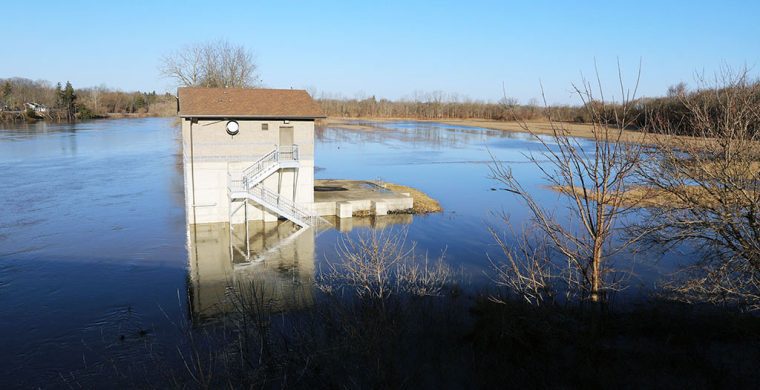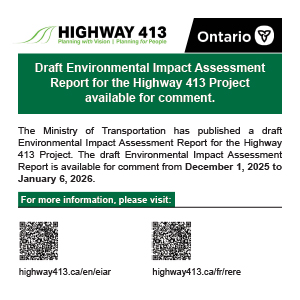Workshop on “violence free future” could be intense at times
By Carl Clutchey, Local Journalism Initiative Reporter, The Chronicle-Journal Participants in a workshop at Fort William First Nation may emerge feeling they’ve taken an important first step towards “a violence-free future.” That’s the hope of organizers of the two-day event, which starts Saturday morning at the band’s community hall. The forum is to be overseen by SBE Group, the 30-year-old Thunder Bay agency focused on “empowering First Nation communities across North America.” The workshop is open to adult Fort William First Nation band community members. It’s the first time SBE Group has conducted a workshop at Fort William First Nation that specifically addresses the issue of violence. “We encourage people to attend just by themselves, or as a couple,” SBE Group chief executive officer Allison Moulson said on Thursday. She...
Poilievre, Singh hit campaign trail as Carney speaks with Trump, premiers on tariffs
By Dylan Robertson Conservative Leader Pierre Poilievre and NDP Leader Jagmeet Singh are on the campaign trail, proposing ideas on housing and crime as Liberal Leader Mark Carney deals with U.S. President Donald Trump’s tariff threats. Trump says he had “an extremely productive call” Friday morning with Carney, adding that he and the prime minister can find common ground in fields like politics and business. Carney will be virtually speaking midday with premiers, after Trump’s threat to impose tariffs on automotive imports. Conservative Leader Pierre Poilievre is pledging to impose life sentences for what he calls large-scale instances of human trafficking, smuggling large numbers of guns or trafficking fentanyl. He will hold a news conference in Nanaimo, B.C., and says in campaign video this morning that he wants to “ensure...
Parents of slain Manitoba woman hope search for remains in landfill can start soon
By Brittany Hobson -CP-Albert Shingoose never wavered in his belief that the unidentified victim of a Winnipeg serial killer who was given the name Mashkode Bizhiki’ikwe, or Buffalo Woman, was his daughter Ashlee. He would travel from his family home at St. Theresa Point Anisininew Nation in northeastern Manitoba to the province’s capital to comb the streets in the hopes of finding his daughter. As the days, weeks and months passed, the father came to the horrific conclusion that the quiet, caring girl he loved was likely a victim of serial killer Jeremy Skibicki. “I knew at some point that Ashlee was Buffalo Woman,” Albert Shingoose said Thursday. His fears were confirmed this week when Winnipeg police officers travelled to St. Theresa Point to tell Albert and Theresa Shingoose that...
Prime Minister Mark Carney hosting a meeting with Canada’s premiers today
By Catherine Morrison -CP-For the second day in a row, Liberal Leader Mark Carney has been pulled away from campaigning to discuss U.S. President Donald Trump’s tariffs. Carney, in his role as prime minister, will meet virtually with Canada’s premiers today to discuss the country’s response to Trump’s latest duties. The president signed an executive order earlier this week to implement 25 per cent levies on all automobile and auto part imports — his latest move to upend global trade through a massive tariff agenda that pushed some automakers’ stock prices down on Thursday. Carney told reporters on Parliament Hill on Thursday that he was organizing the meeting and said the discussion — among others with business leaders, unions and Indigenous leaders — would help Canada have a single co-ordinated...
The Latest: RFK Jr. shutting down entire health agencies; AP and White House are back in court
-AP-The White House has withdrawn Rep. Elise Stefanik’s nomination to be U.S. ambassador to the United Nations, a stunning turnaround for Trump’s Cabinet pick after her confirmation had been stalled over concerns about Republicans’ tight margins in the House. In a major overhaul, the U.S. Department of Health and Human Services will lay off 10,000 workers and shut down entire agencies, including ones that oversee billions of dollars in funds for addiction services and community health centers across the country. Government lawyers say a Turkish doctoral student at Tufts University was moved to a Louisiana detention center before a judge ordered her kept in Massachusetts. A federal judge gave the Trump administration until Friday to explain in court why she’s being detained. Leaders of Canada and Mexico are grappling with...
Nova Scotia judge given reprimand, agrees to treatment after review of complaints
-CP-A Nova Scotia provincial court judge has been sanctioned for his conduct on the bench, with a review committee concluding that undiagnosed mental health issues were a factor in his behaviour. Judge Alain Bégin was investigated for his conduct in three cases. In one of them, Bégin said before final arguments in court that the accused was a “sexual deviant” and that he had “no doubt” the defendant was guilty of sexual assault. Then, the judge tried to have those comments stricken from the court record. The defendant in the case was convicted of sexual assault, invitation to sexual touching and sexual touching, but the ruling was overturned on appeal. The Nova Scotia Court of Appeal ordered a new trial based on a reasonable apprehension of bias. As well, the...
Tsleil-Waututh Nation receives over $7.5 million to restore their shores
By Abby Luciano, Local Journalism Initiative Reporter səlilwətaɬ (Tsleil-Waututh Nation) elders and members have seen their shoreline change over the years with erosion and flooding. But big plans are coming to help restore and protect the Tsleil-Waututh Nation’s shoreline after receiving over $7.5 million in federal funding. The Tsleil-Waututh Nation is also contributing $2.5 million with support from the province, making a joint investment of $10.1 million. Already, up to 13 metres of shoreline has been lost in some places, which is likely to worsen with sea level rise, a January project document states. That erosion and flooding impacts the Nation’s ability to harvest food, carry out cultural and spiritual practices, share Indigenous teachings and act as stewards for the land. “It’s disappearing right in front of our eyes, so...
Nova Scotia judge given reprimand, agrees to treatment after review of complaints
-CP-A Nova Scotia provincial court judge has been sanctioned over his conduct on the bench, with a review committee finding undiagnosed mental health issues were a factor in his behaviour. The investigation of Judge Alain Bégin involved three cases, including one where he referred to a defendant during a sexual assault trial as a “sexual deviant” and later attempted to argue his remark had been off the record. He was alleged to have shown bias in two other cases, once against sexual assault victims and another time against Indigenous offenders. A statement from the Nova Scotia judiciary says Bégin agreed to the resolution of the complaints, which stemmed from cases he heard between 2021 and 2024 as a judge in Truro, N.S. The report made public today brings the disciplinary...
Grand River floods over its banks
The Grand River flooded its banks last week sending a reminder out that spring is here. The waters washed over fields and roadways leaving Six Nations water pumping station isolated. (Photos by Jim C. Powless)...
Indigenous communities among those in Canada reconsidering use of Starlink for critical services, remote communities
By Sarah Smellie More than half of Canada’s provincial and territorial governments buy critical internet and emergency communications services from Starlink — a satellite constellation owned by billionaire Elon Musk. And with Musk now acting as a top adviser to a U.S. president who has repeatedly threatened to annex Canada, one researcher sees that reliance as a threat to Canadian sovereignty. Dwayne Winseck, a professor of journalism and communications at Carleton University who has studied Starlink’s emergence as the sixth-largest internet service provider in Canada as of 2023, says Canadian governments must do the “maximum possible” to disentangle themselves from Starlink. “Cutting contracts is one approach,” he said in a recent interview. “There are also some made-in-Canada alternatives that can be accelerated.” From a $200,000-per-year agreement with Newfoundland and Labrador’s...
Six Nations Elected Council gives local Farmers’ Association $70,000
By Lynda Powless Editor The Six Nations Farmers’ Association (SNFA) is getting $75,000 from Six Nations Elected Council (SNEC) and they didn’t have to ask for it. The group originally asked SNEC, during its March 17th open Finance meeting, for $60,000 to plant 25 acres of white corn for the annual community harvest. The SNFA white corn project includes planting 25 acres of white corn and another 10 acres of flint corn. SNFA president, Frank Montour, told SNEC “the assistance we’re looking for from yous again this year is very greatly appreciated. It helps us ensure the projects go ahead.” He told SNEC “We’re trying to strive for and looking for sustainability for our people to eat here. We’re all in this together. It’s not for me or Thomas, It’s...
Norfolk County Council saving Indigenous acknowledgement for “special occasions”
By J.P. Antonacci, Local Journalism Initiative Reporter, The Hamilton Spectator Since the idea of an Indigenous acknowledgment for Norfolk County was floated almost four years ago, councillors have spent considerably more time debating the wording of the statement than hearing the final product read aloud. Back in 2021, Coun. Tom Masschaele suggested it was “high time” the county crafted a statement recognizing the presence of First Nations peoples in the area. But some council members worried a land acknowledgment could be used in court by Indigenous groups asserting territory rights within the county. The final version of the statement makes no mention of land, which raised some eyebrows. “Is an Indigenous Acknowledgement that refuses to acknowledge the lands upon which we exist an Acknowledgement?” tweeted Norfolk filmmaker Gregg McLachlan. “Norfolk...
Election 2025 … Indigenous issues at bottom of agenda
It’s election time. A federal election has been called and other than a few platitudes made by both the Conservative and Liberal leaders don’t expect Indigenous issues will be top of either of their agendas. In fact, it’s actually getting harder as the campaigns open up to define who’s message we are hearing. The Conservatives message is and has been out for weeks. It’s simple and aimed at your pocketbook. The Conservatives came out slugging with the call to cut the tax saying they would lower income taxes that could save an average person 15% or about $900 a year. Apparently the newly crowned Liberal Leader former banker Mark Carney got the message. On the heels of the PC issues of affordability and tax cuts out comes the Liberal’s new...
Today in history
March 26 In 1885, the first battle of the Northwest Rebellion took place between Northwest Mounted Police and Metis troops at Duck Lake, Sask. Metis under Louis Riel battled police under Supt. L.N.F. Crozier, who was in charge of defending the area. The shot that began the battle was fired over a misunderstanding when representatives of the two sides came out to negotiate with each other. Crozier gave the order to retreat after a battle lasting about 45 minutes, in which 17 of his men were killed. The Metis lost five men. In 2018, Prime Minister Justin Trudeau formally exonerated six Tsilhqot’in chiefs who were hanged by B.C.’s colonial government following a deadly confrontation with white road builders during the so-called “Chilcotin War of 1864.’’ March 29 In 2016, nine...
Weekly Cartoon
...
Six Nations Elected Council to receive $10 million from Indigenous Services Canada for various departments and projects
Six Nations Elected Council accepted funding agreements for this fiscal year and for the upcoming fiscal year. Six Nations Elected Council (SNEC) passed a motion to receive funding amendments for 2024-2025 and program start-up funds for 2025-2026 from Indigenous Services Canada (ISC) at its General Finance meeting on March 17, but some councillors didn’t understand where the funds were going. SNEC agreed to a five-year comprehensive funding agreement with ISC and funding amendments for this month totaling more than $10 million for 2024-2025 and about $1 million for 2025-2026. Jennifer Court, Acting CEO Director of Finance presented SNEC with amendments bringing additional funding for the LESP Targeted Lands – Costs for Addition to Reserve with $81,450; Indigenous Early Learning – programs and Services with $3,713,762, Indigenous Early Learning Governance with...
Six Nations Fire department upgrades equipment
The Six Nations Fire Department will soon have its own oxygen tank refill station. Six Nations Elected Council (SNEC) approved funding reallocations at its General Finance meeting on March 17 to allow the fire department to purchase an SCBA (self contained breathing apparatus) refill station. The Community Committee recommended SNEC approve the request to reallocate $48,310 from the 2024-2025 Minor Capital budget in addition to the fire department’s $11,686 budget for equipment purchases to purchase the SCBA refill machine at a cost of $60,000. An SCBA provides a continuous supply of clean air to fire fighters, enabling them to safely perform their duties in hazardous environments....
York University professors seek court order to stop program suspensions
-CP Four senators at York University and a member of its academic planning and research committee are asking for a judicial review of the institution’s decision to suspend admissions to several undergraduate programs. The university has said it is temporarily suspending new admissions to 18 degree programs in the fall of 2025, including Indigenous studies, gender and women’s studies and environmental biology programs. Members of the university’s senate and academic planning and research committee have filed an application in the Ontario Superior Court of Justice, asking it to order York University to rescind its suspension decisions and to follow a collegial process before suspending admissions to the academic programs. The applicants are arguing that York University’s senate has jurisdiction over academic matters and suspending admissions to programs requires the senate’s...
Rebels to host six-team tournament
By Sam Laskaris Writer The Six Nations Rebels have already staged about 10 practices and a pair of intra-squad games as they gear up for their 2025 season. But Blue Hill, the new head coach of the local Junior B lacrosse squad, has the date of Apr. 5 circled on his calendar. That’s the date the Rebels will stage a six-team tournament at Six Nations. All of the tournament participants will play three games each that day. And those contests will help Hill and his coaching staff get a better indication of what the club’s roster will look like when it begins regular season play next month. “It will help us trying to see where their competitiveness is, their IQ and their work level,” Hill said. “It’s just a whole...
SPORTS BRIEFS: Six Nations men play at NLL and NHL
By Sam Laskaris Writer Longboat contributing to Black Bears’ offence Six Nations member Travis Longboat is fitting in nicely with his new National Lacrosse League (NLL) squad in the nation’s capital. Longboat, who started the season with the Albany FireWolves, was acquired by the Ottawa Black Bears in a trade on Mar. 10. Besides Longboat, the Black Bears also received the FireWolves’ first-round and fourth-round picks in the 2026 NLL Entry Draft. In return the Albany club received Johnathan Peshko from the Ottawa roster. Longboat has made his mark in all three of the games that he has suited up for thus far with the Black Bears. For starters, he scored once and added two assists in Ottawa’s 18-8 home loss against the Rochester Knighthawks on Mar. 15. That game...

















